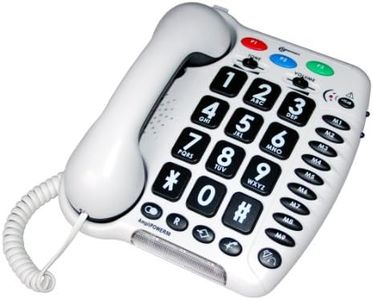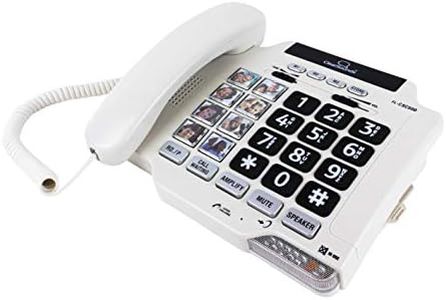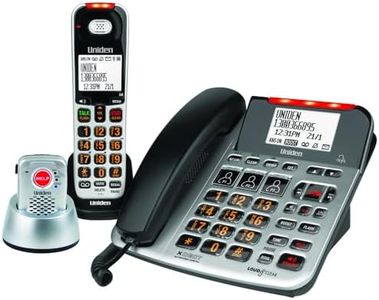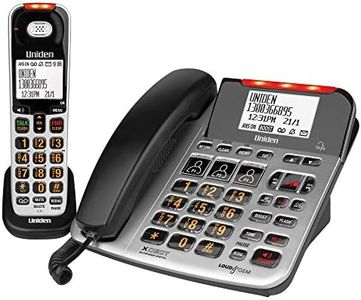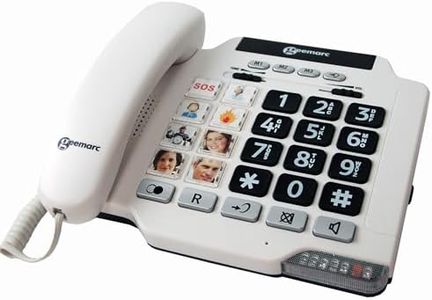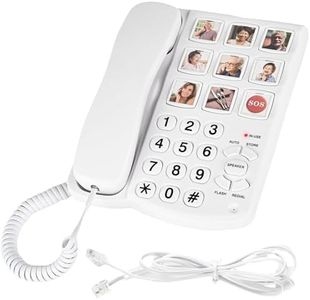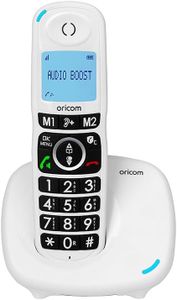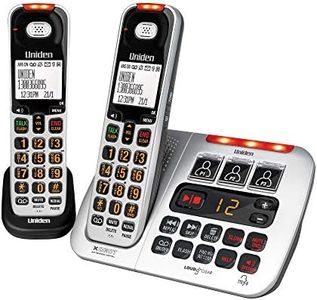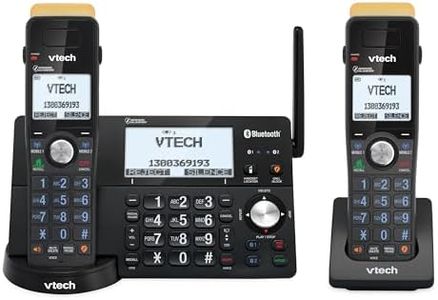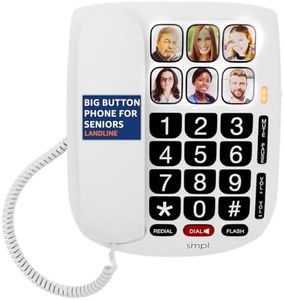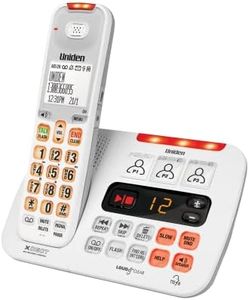We Use CookiesWe use cookies to enhance the security, performance,
functionality and for analytical and promotional activities. By continuing to browse this site you
are agreeing to our privacy policy
10 Best Hearing Impaired Phones
From leading brands and best sellers available on the web.Buying Guide for the Best Hearing Impaired Phones
Choosing a phone for someone with hearing impairment requires focusing on features that enhance listening clarity and accessibility. Rather than just picking any phone, it's important to look at specialized functionalities that support hearing needs. Pay attention to specific technologies, amplification options, compatibility with hearing aids, and visual notifications. Carefully reviewing and understanding how these specs relate to your daily usage can help you make a comfortable and effective choice.Amplified VolumeAmplified volume determines how much louder the phone can make calls compared to a standard model. This is crucial if you or the person using the phone has difficulty hearing regular phone conversations. Phones typically offer varying degrees of amplification, often measured in decibels (dB). Low amplification is up to 20dB, suitable if you only have slight trouble hearing. Medium amplification, around 30-40dB, fits moderate hearing loss, while high amplification, 50dB or more, works best for severe hearing impairment. Think about how much additional volume is necessary in everyday conversations to guide your choice.
Hearing Aid Compatibility (HAC)Hearing Aid Compatibility lets the phone work more smoothly with hearing aids, reducing annoying buzzing or feedback. HAC is identified by ratings: 'M' for microphone and 'T' for telecoil, each with a scale from 1 to 4 (higher is better). Phones rated M3/T3 or above are generally considered good for most modern hearing aids. Consider the type of hearing aid you use—if yours has a telecoil, a high 'T' rating will matter more. If your hearing aid only uses the microphone, focus on the 'M' rating.
Visual AlertsVisual alerts are features like flashing lights or screen notifications that signal an incoming call, message, or alarm. These are helpful if you might miss sound-based notifications. Some phones offer simple LED flashes, while others have bright screens or vibration options. If you spend time in noisy or quiet environments where you might not notice audio alerts, prioritize strong visual or vibration options.
Ringer VolumeRinger volume is how loud the phone rings. Phones for hearing-impaired users often have extra-loud ringers, usually ranging from normal (about 70dB) to very loud (100dB or more). This makes it easier to hear the phone ring from across a room or in a noisy space. If you often have trouble hearing rings, opt for a model with a higher maximum ringer volume.
Tone ControlTone control allows you to adjust the sound quality of voices during calls. Some people with hearing loss can hear certain pitches better than others, so adjusting the bass or treble can make voices clearer. Phones may let you pick different tone settings or precisely tweak the sound. If you notice certain voices are tough to understand, looking for this feature can help conversations be much clearer.
Speakerphone QualitySpeakerphone quality covers both loudness and clarity when using hands-free mode. This can be important if you prefer not holding the phone to your ear, or if you use speech-to-text features. Quality in this area varies; high-quality speakerphones have clear, distortion-free sound at higher volumes. If hands-free conversations are important, try out the speakerphone before buying or look for positive reviews on this aspect.
